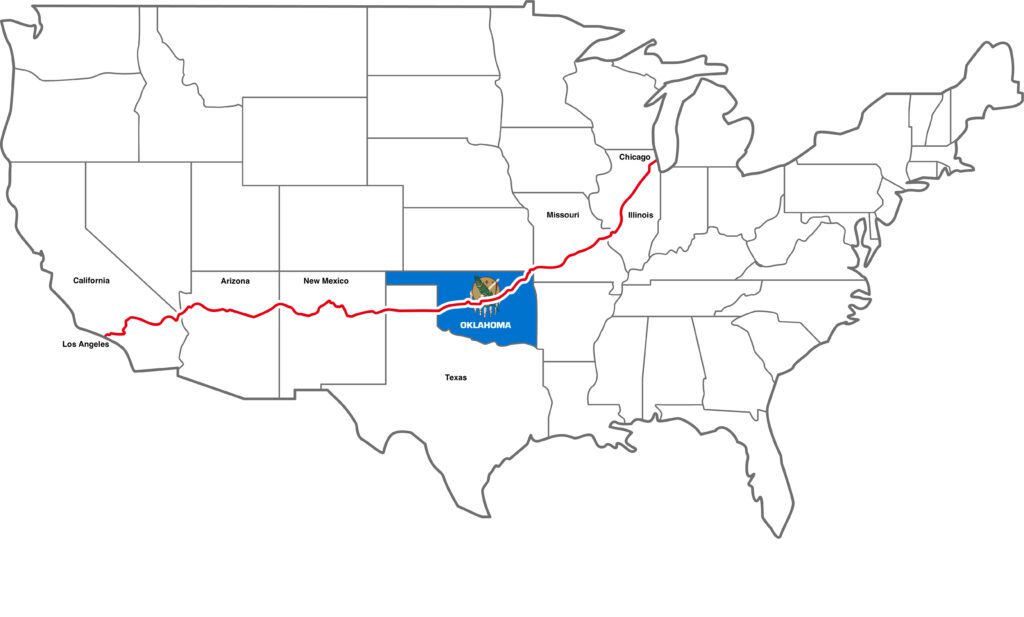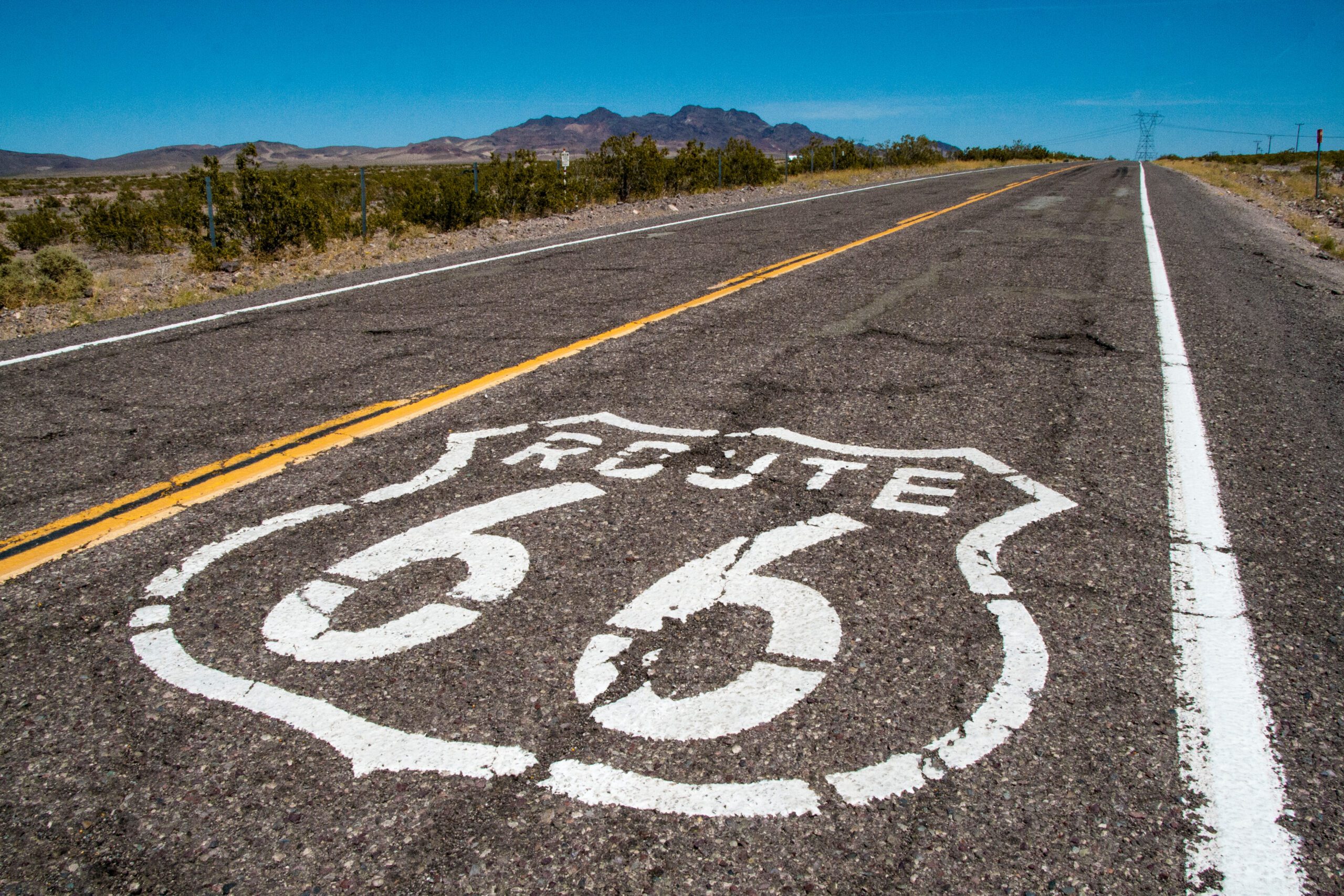This article provides a brief history of Route 66 and information about where to find some parts of the old Route 66 that still exist.
At a Glance
Route 66 once stretched more than halfway across the United States. For nearly half a century, it was the chief commercial highway and main tourist artery to the West Coast. Over those years, Route 66 gained a certain mythical character that is still fondly remembered. Its days of glory are now faded and most of the old highway has disappeared; yet the nostalgic attraction of this road lives on.

History
The West Coast was once severely isolated
Prior to the twentieth century, the West Coast of the United States was severely isolated from the East and Midwest by great barriers of mountains, deserts and barren wastes. Until the transcontinental railroad was completed in 1867, it was quicker and easier to sail a ship around the southern tip of South America than to attempt a journey across our country.
At the beginning of the twentieth century, it was still difficult and often perilous to drive from coast to coast. Paved highways frequently ended in the Rocky Mountains or at the edge of the southern deserts. To travel further, often required navigating poorly marked unimproved roads or even dirt tracks. There were few facilities or traveler’s amenities along the way.
Route 66 connected Chicago with Los Angeles
Several businessmen from Oklahoma and Illinois decided that the United States needed an intercontinental highway connecting the East Coast with the West Coast. Naturally, they thought it should pass through their hometowns of Springfield Illinois and Oklahoma City. By 1926, they convinced the US government of the strategic value of such a road and construction was finally begun. The road was not fully paved until 1938. They called it Route 66.
Route 66 began along the shores of Lake Michigan in Chicago Illinois, that great metropolitan center at the northern extreme of the immense midwestern agricultural basin of the Mississippi River. Chicago was already well connected to the big cities on the East Coast. From there, the road headed south across Illinois, Missouri and the edge of Kansas. In Oklahoma, it turned due west across the panhandle of northern Texas, New Mexico and Arizona before finally entering California. Route 66 ended in Los Angeles at the beaches of Santa Monica.
Current Route 66
The longest intact sections of the old road can be found in western Arizona and in eastern California. A 100-mile stretch of Route 66 curves northwest from Seligman Arizona, through the Havasupai Indian Reservation at Peach Springs, then veers southwest to Kingman Arizona. Ninety miles to the west of Kingman, another 100-mile section of old Route 66 veers south of Interstate 40 and curves through the Mojave desert through the tiny isolated community of Amboy California before it rejoins the new highway in Ludlow. If you want to sample the character of the old mother road, this is a good location to visit. The towns of Williams, Seligman, Peach Springs and the small city of Kingman have preserved or restored some of the nostalgic roadside attractions. You can still see abandoned tourist accommodations and attractions along the old highway.

If you want to follow the original path of Route 66 from Chicago to LA, I suggest you purchase a good Route 66 guidebook. Much of its 2400 mile original route is now difficult to find. You will likely find yourself jumping on and off of the newer interstate highways in search of small sections of the old road. A 110-mile section of original Route 66 may still exist between Tulsa and Oklahoma City in Oklahoma. The newer Turner Turnpike parallels it but the old mother road still exists.
The longest existing sections of Route 66 are in Arizona and California
You are most likely to find parts of the original Route 66 between Flagstaff Arizona and Los Angeles. Along that part, you will find the largest remaining sections of the original road with a lot of other scenic attractions in the vicinity. The Grand Canyon, Sedona, Boulder Dam, Las Vegas, Barstow and the Mojave Desert are all close to old route 66. If you want to do it in style, rent a Corvette or a Harley Davidson motorcycle in Las Vegas, drive down to Kingman, and cruise along the old mother road.
Additional Resources
The National Park Service has a very good website on Route 66 containing a more detailed history and information on the original route and roadside attractions by state.
The Route 66 Road Trip website is a great resource for discovering information about this historic highway as well as planning a roadtrip on it.
The RoadTrip USA website is also a great resource for Route 66 information.
The RoadTrippers website provides useful information and planning tools for Route 66.
The National Historic Route 66 Federation is dedicated to preserving the history and driving routes of this historic highway.

